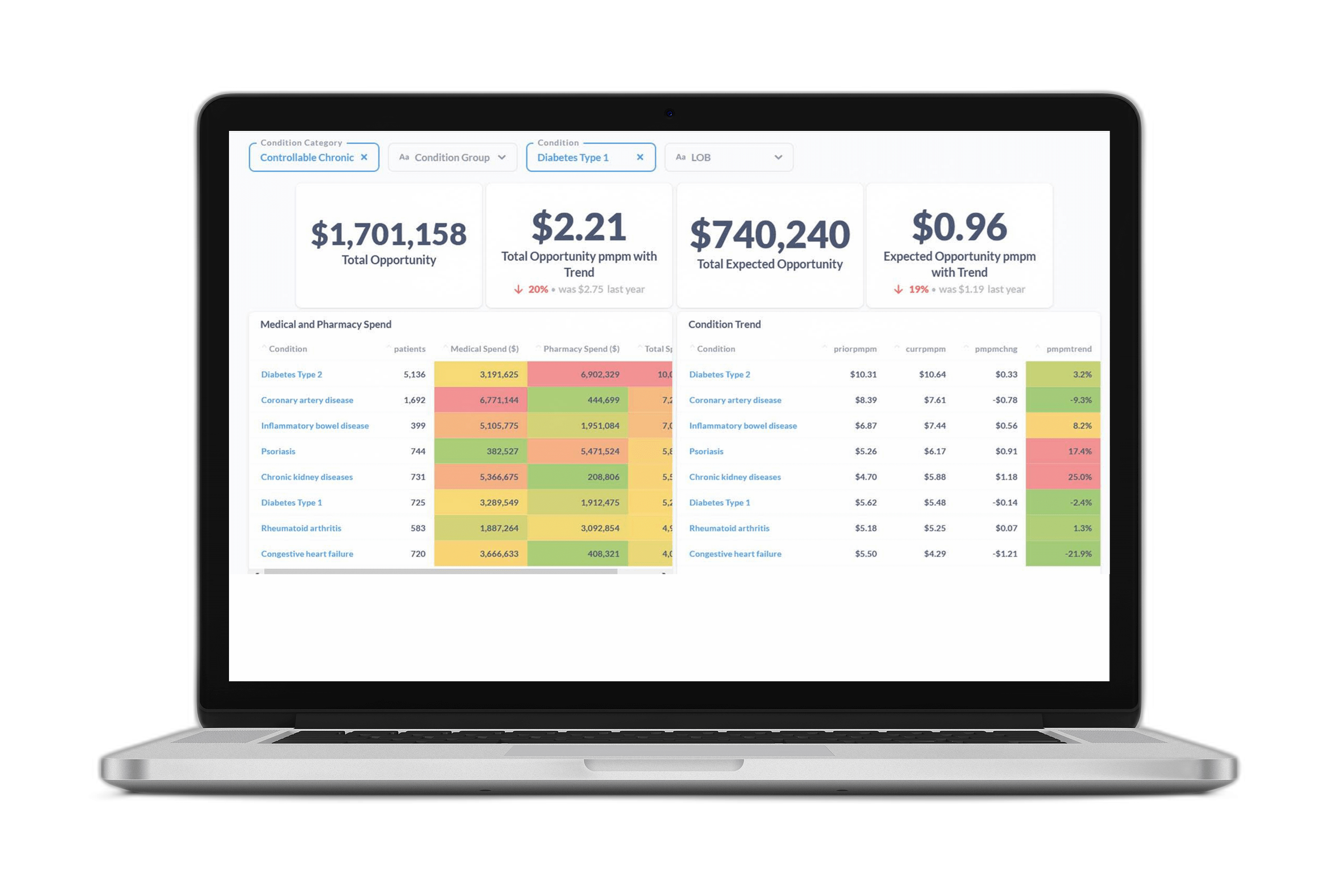Healthcare data is highly complex—containing hundreds of thousands of ICD-10, NDC, and CPT codes, all of which support patient care, billing, and reimbursement.
To make sense of it all, healthcare organizations typically use commercially available clinical episode groupers, which organize paid claims data into meaningful episodes of care. Many of these legacy tools were built in the 1990s and enable basic retrospective reporting and analysis. However, some fall short in the following areas:
- Identifying prospective value-based opportunities
- Processing massive data sets at a high velocity
- Incorporating new, non-traditional data elements
It’s time to demand more from your grouper.
With newly available data processing and AI/ML technologies, grouping tools should have the power to maximize the value of all your data. They should be able to process that data at a cadence of your choosing. And they should inform data-driven decisions that help you manage your members and providers to optimize health, manage costs, and measure outcomes.
At Certilytics, we built our CORE® Clinical Episode Grouper, which applies and integrates our proprietary data management techniques, ML/AI modeling, information processing, and reporting technologies. This gives our customers the predictive intelligence they need to make better decisions when managing members and providers to optimize clinical outcomes and coordinate care across programs.
Based on our experience building our own grouper, we’ve identified Five Critical Features that should be considered when selecting a grouping technology for your organization’s success in a value-based healthcare ecosystem.
1. Integration of New Data Domains
The number of data sources available to healthcare organizations is growing—and you need a grouper that can keep up.
Your next grouper should take advantage of data elements beyond just retrospective medical and pharmacy claims data. Social determinants of health, lab results, health risk assessment data, provider information, disability data, and patient medical record data are just a few examples of domains that could improve the accuracy of grouping and provide for more insights into treatment patterns.
2. Pharmacy Integration
The integration of medical and pharmacy data into one cohesive picture for the diagnosis and treatment of a condition is a key byproduct of a grouping algorithm. If your grouper is not taking advantage of the power of the information in the comingling of these two attributes, you are missing out on opportunities.
3. Predictive Accuracy
Categorizing historical data for retrospective reporting is one thing. It’s quite another to have a dynamic grouper that is truly forward-looking.
For instance, if the data shows a patient with a newly diagnosed condition, improving a patient’s clinical and financial outcome by obtaining a series of analytic predictions is highly relevant:
- What are the projected treatment pathways for this patient and at what cost?
- What are the chances the patient will have a serious event that causes a huge uptick in healthcare resource consumption?
- When does it make the most sense to outreach and help the patient better manage the condition, without being too early or too late?
By integrating the previously mentioned data domains with machine learning models within your episode grouper, an extremely powerful set of analytic tools and insights can be unleashed.
4. Flexibility
“Out of the box” isn’t always the right fit. A grouper should allow for the building of customized categorization that satisfies the needs of your organization. For example, you may have a value-based provider contract that is looking for a specific outcome for a specific condition that the standard packaged grouper does not have. The grouper should be easy to modify to help take the requirements of your specific program into account.
5. Capitalizing on Today’s Technologies
Be on the lookout for groupers that promise to do everything but fall short. Most of this is a byproduct of the legacy platforms on which these groupers are built. You want your grouper to utilize sophisticated, flexible machine learning technologies to allow for a better end product, regardless of the intended use of the output. Newer technologies allow a grouper to go deeper into each domain without sacrificing model performance.
So don’t just settle for an episode grouper that is tired and built on old technology—and can’t handle the demands of your organization. Look for the newest, clinically sound, data diverse, forward looking groupers that will catapult your organization to new analytic heights.









